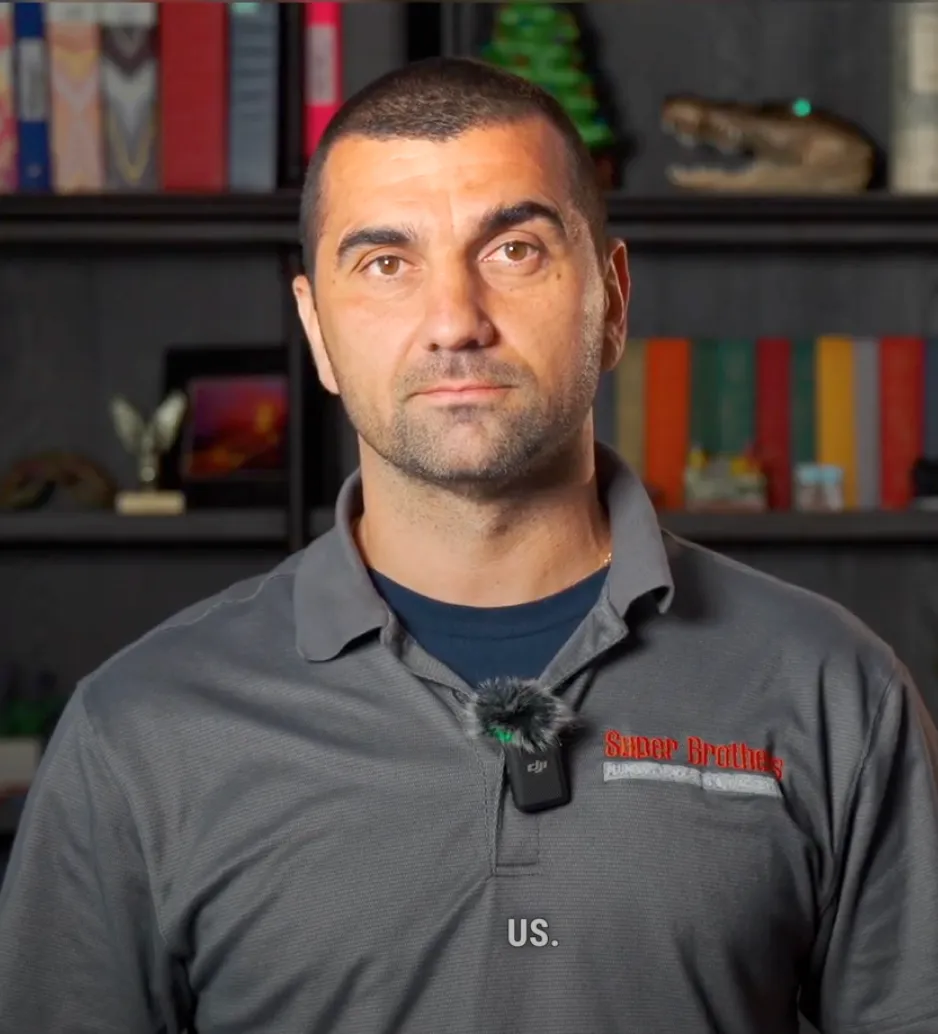When it comes to upgrading your bathroom, nothing sets the stage like a sleek and functional shower base installation. Say goodbye to old, worn-out shower pans and hello to a fresh, modern look that transforms your space. Whether you prefer the clean lines of a tile-ready shower pan or the durability of an acrylic base, we’ve got you covered with expert shower pan installation services.
Forget about leaks, cracks, and outdated designs – our professional team ensures a seamless transition to your new shower base pan installation. Elevate your daily routine with a hassle-free process that brings style and functionality together effortlessly. Get ready to step into a whole new level of luxury and convenience in your bathroom oasis.
Key Takeaways
- Proper preparation is key: Ensure the subfloor is level and clean before installing the shower pan to prevent future issues.
- Attention to detail matters: Take time to correctly fit the shower pan and install the drain flange securely to avoid leaks.
- Waterproofing is essential: Building a waterproof base and installing a liner are crucial steps to prevent water damage and mold growth.
- Test for leaks before finalizing: Conduct a thorough leak test after installation to catch any issues early and ensure a watertight seal.
- Regular maintenance is crucial: Keep an eye on your shower pan for any signs of damage or leaks to address them promptly and prevent costly repairs.
- Consult a professional if needed: If you encounter difficulties or are unsure about any step, don’t hesitate to seek help from a professional to ensure a successful installation.
Understanding Shower Pan Installation
Positioning
Positioning the shower pan correctly is crucial for a successful installation. It should align with the drain location, ensuring efficient water drainage. Placing the pan in the right spot prevents future issues like water pooling or improper drainage.
To position the shower pan accurately, mark the center point of the drain on the floor. Align this point with the center of the shower pan drain hole to ensure proper water flow towards the drain.
Surface Leveling
Ensuring that the shower pan sits on a flat and level surface is essential. A level base prevents water from pooling in certain areas, which can lead to leaks or damage over time. Use a spirit level to check if the floor is even before installing the shower pan.
Aim for a completely flat surface to avoid any gaps between the shower pan and the floor. Even minor unevenness can cause problems later, such as water leakage or an unstable shower base.
Leak Testing
Testing the connection between the shower pan and drain for leaks is a critical step in installation. Fill the shower pan with water, allowing it to sit for some time while checking for any signs of leakage around the drain area.
Inspect all connections thoroughly, including where pipes meet and where they connect to fixtures. Any leaks found during testing should be addressed immediately to prevent potential water damage.
Preparing the Subfloor
Marking Placement
Mark the area on the subfloor for the shower pan installation, ensuring it aligns with the drain location. This step is crucial to ensure proper positioning.
To begin, measure and mark where the shower pan will sit on the subfloor. Ensure accuracy by double-checking measurements before proceeding.
Cutting Drain Hole
Utilize a jigsaw or circular saw to cut a hole in the subfloor for the shower drain pipe. Precision is key to avoid any misalignment issues later on.
When cutting the hole, be mindful of the size required for your specific drain. Take accurate measurements beforehand to avoid errors during this step.
Leveling with Compound
Consider using a self-leveling compound if the subfloor is not entirely flat and level. This compound helps create a smooth surface for shower pan installation.
Before applying the self-leveling compound, thoroughly clean and prepare the subfloor to ensure optimal adhesion and leveling results.
Fitting the Shower Pan
Dry-Fit
Place the shower pan in the opening to ensure it fits properly. Mark its edges on the subfloor accurately.
After dry-fitting, remove the shower pan and proceed with drilling holes in the flange at each stud location for a secure installation.
Level Adjustment
Before securing the shower pan onto adhesive or mortar, make sure it is perfectly level. Adjust as needed for a perfect slope towards the drain.
During installation, ensure that the shower pan is aligned correctly with the previously prepared subfloor for a seamless fit.
Installing Drain Flange
Test Fit
To begin installing the drain flange, it’s crucial to test-fit it first. This step ensures that the flange aligns perfectly with the shower base, preventing any future leaks or issues. Place the drain flange in position and assess if it fits flush with the base without any gaps.
Apply Caulk
Once you’ve confirmed the fit, the next step is to apply a sealant to create a watertight seal. Use latex/acrylic or silicone caulk and spread it evenly on the underside of the shower drain flange’s rim. This sealant will prevent water from seeping through any gaps between the flange and the base, enhancing the overall durability of your shower installation.
Secure with Locking Ring
After applying the caulk, proceed to secure the shower drain flange in place. Take the locking ring provided with the drain assembly and screw it onto the threads. Ensure that you tighten it sufficiently to hold the flange firmly against the shower base. This step is crucial for maintaining a stable and leak-free connection between the drain and the base.
By meticulously following these steps, you can ensure a seamless and durable shower pan installation that will stand the test of time.
Securing the Pan
Adhesive Application
Apply adhesive or mounds of mortar beneath the pan to ensure a stable foundation for the shower base. This step is crucial in preventing any movement or shifting of the pan over time.
To achieve a level surface, carefully adjust the pan until it aligns perfectly with the surrounding walls. This alignment is essential for a seamless and professional-looking shower base installation.
Attaching to Wall Studs
Secure the shower pan in place by screwing its rim into the designated wall studs. By fastening the pan to these studs, you enhance its structural integrity and overall durability.
After positioning and securing the pan, focus on properly connecting the drain system. Begin by tightening the rubber gasket around the drainpipe to create a watertight seal.
Testing for Leaks
Thorough Examination
To ensure a watertight shower pan installation, conduct a meticulous examination to detect any potential leaks. Start by checking the connection between the shower pan and the drain.
Inspect every corner of the shower base meticulously, paying close attention to areas prone to leakage, such as seams and joints. Look for any signs of water seepage or dampness that could indicate a leak.
Sealing Adequately
Proper sealing is crucial in preventing water from leaking out of the shower base pan. Use high-quality sealant specifically designed for showers to seal all gaps and crevices effectively.
Apply the sealant generously along the edges and seams of the shower pan to create a strong barrier against water penetration. Ensure that the sealant is evenly spread and covers all potential leak points thoroughly.
Prompt Leak Resolution
If any leaks are detected during the testing process, it is imperative to address them promptly. Ignoring leaks can lead to water damage, mold growth, and structural issues over time.
Identify the source of the leak accurately before proceeding with repairs. Depending on the severity of the leak, you may need to reapply sealant, replace damaged components, or seek professional assistance to resolve the issue effectively.
Building a Waterproof Base
Waterproofing Materials
When constructing a base for your shower pan, it’s crucial to prioritize waterproofing. Utilize waterproofing materials such as membrane liners or cement boards to safeguard the subfloor against water damage. These materials act as barriers, preventing moisture from seeping into the underlying structure.
To ensure long-term durability, apply a waterproofing membrane over the base before installing the shower pan. This additional layer adds an extra level of protection, especially in areas prone to leaks. By incorporating these materials, you can significantly reduce the risk of water-related issues in your shower area.
Proper Sealing Techniques
Properly sealing the base is essential to maintain a watertight seal and prevent leakage. Use high-quality silicone caulk or specialized sealants specifically designed for wet environments. Pay close attention to corners and edges where water might accumulate or seep through.
When sealing the shower base, focus on creating a continuous barrier that covers all seams and joints effectively. Ensure thorough coverage around drain openings and any penetrations in the base. By meticulously sealing these vulnerable points, you can minimize the chances of water infiltrating the subfloor and causing damage.
Importance of Drainage
In addition to waterproofing, adequate drainage plays a vital role in preserving the integrity of your shower base. Proper slope design ensures that water flows towards the drain efficiently, preventing pooling and stagnant water. Incorporate a shower pan liner beneath the base to direct any excess water towards the drain.
Installing the Liner
Waterproof Liner
Install a waterproof liner to safeguard the subfloor against water damage. This crucial step ensures long-term durability for your shower base pan installation.
The liner acts as a protective barrier, preventing water from seeping into the subfloor and causing structural issues over time.
Properly position the liner within the shower area, ensuring complete coverage to create a watertight seal.
Securing the Liner
Secure the liner in place using appropriate adhesives or fasteners. This step is essential to maintain the integrity of the waterproofing system.
Ensure that all edges and seams of the liner are securely sealed to prevent any potential leaks.
Following manufacturer instructions is vital for correctly installing and securing the liner. These guidelines provide specific details tailored to the product’s application height and material properties.
Final Checks
Perform a thorough inspection after installing the liner to confirm there are no gaps or loose areas that could compromise its effectiveness.
Test the liner by conducting a water test before proceeding with further construction. This test helps identify any potential leaks or weak points in the waterproofing system.
Completing this phase successfully sets a solid foundation for the subsequent steps in your shower pan installation process.
Performing a Flood Test
Simulating Real-Life Conditions
Fill the shower pan with water after completing the installation to ensure it holds up under pressure. This step is crucial for verifying the effectiveness of the waterproofing system.
Inspecting for Leaks: Carefully examine the shower pan and its surroundings for any signs of water leakage during the flood test. Look out for damp spots or water seepage that indicate potential issues.
Addressing Leakages
If you notice any leaks during the test, identify the source promptly. Common areas prone to leaks include corners and seams. Fix any problems found before proceeding with further installation steps.
Taking Corrective Actions: Apply additional waterproofing solutions or sealants to problematic areas where leaks are detected. Ensure thorough coverage to prevent future water damage risks.
Verifying Waterproofing Measures
After addressing any leakages, repeat the flood test to confirm that the remedial actions have been effective. This step guarantees the longevity and reliability of your shower pan installation.
Ensuring Long-Term Durability:
Summary
You’ve now grasped the essentials of shower pan installation, from preparing the subfloor to conducting a thorough leak test. By following these steps diligently, you ensure a sturdy and waterproof base for your shower. Remember, attention to detail is key when securing the pan and installing the liner to prevent any future issues.
Now that you’re equipped with this knowledge, go ahead and tackle your shower pan installation project confidently. Don’t forget to refer back to these steps as needed and reach out to professionals if you encounter any challenges along the way. Your bathroom upgrade is within reach—get started today!


